Navin Cooray
University of Oxford, Institute of Biomedical Engineering, Dept. Engineering Sciences, Oxford, UK
Automated Movement Detection with Dirichlet Process Mixture Models and Electromyography
Feb 15, 2023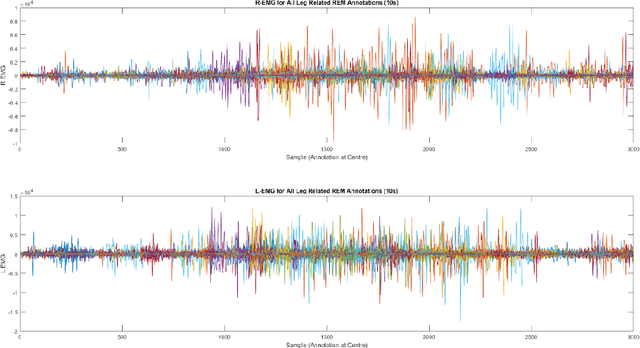
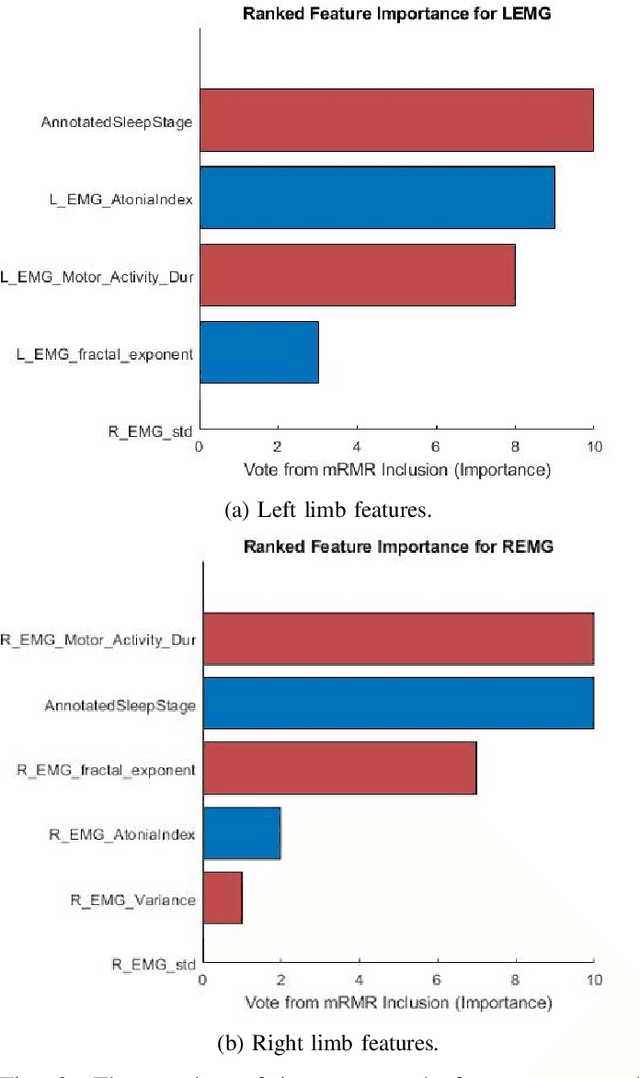
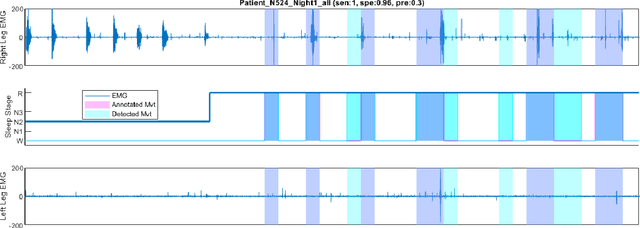

Abstract:Numerous sleep disorders are characterised by movement during sleep, these include rapid-eye movement sleep behaviour disorder (RBD) and periodic limb movement disorder. The process of diagnosing movement related sleep disorders requires laborious and time-consuming visual analysis of sleep recordings. This process involves sleep clinicians visually inspecting electromyogram (EMG) signals to identify abnormal movements. The distribution of characteristics that represent movement can be diverse and varied, ranging from brief moments of tensing to violent outbursts. This study proposes a framework for automated limb-movement detection by fusing data from two EMG sensors (from the left and right limb) through a Dirichlet process mixture model. Several features are extracted from 10 second mini-epochs, where each mini-epoch has been classified as 'leg-movement' or 'no leg-movement' based on annotations of movement from sleep clinicians. The distributions of the features from each category can be estimated accurately using Gaussian mixture models with the Dirichlet process as a prior. The available dataset includes 36 participants that have all been diagnosed with RBD. The performance of this framework was evaluated by a 10-fold cross validation scheme (participant independent). The study was compared to a random forest model and outperformed it with a mean accuracy, sensitivity, and specificity of 94\%, 48\%, and 95\%, respectively. These results demonstrate the ability of this framework to automate the detection of limb movement for the potential application of assisting clinical diagnosis and decision-making.
Detection of REM Sleep Behaviour Disorder by Automated Polysomnography Analysis
Nov 12, 2018
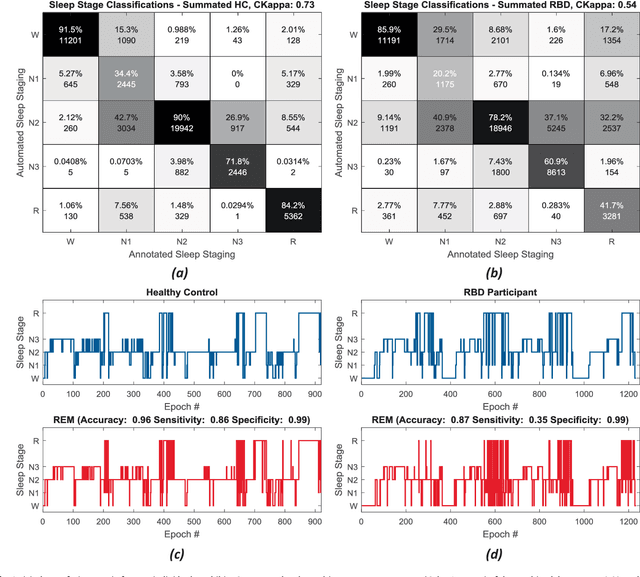
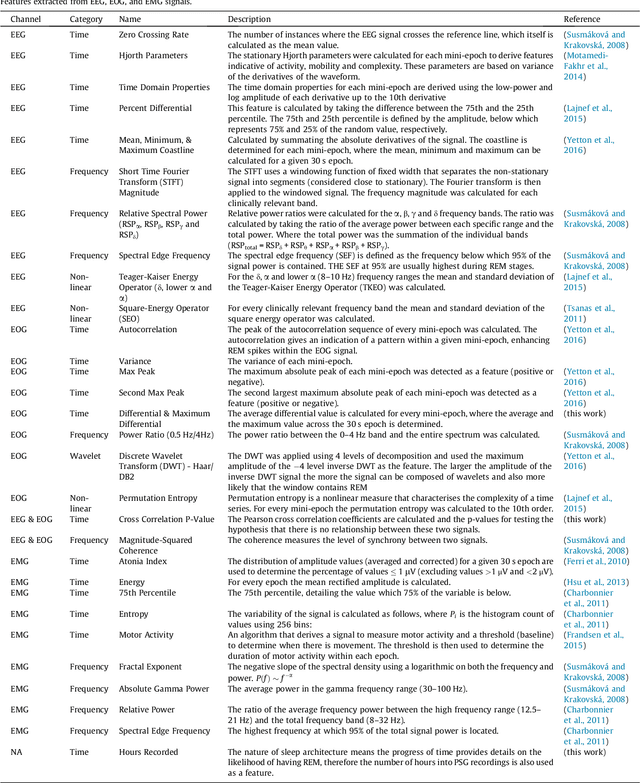
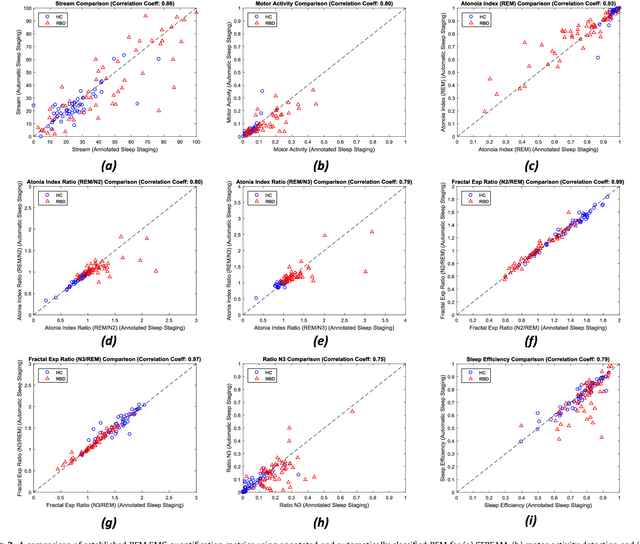
Abstract:Evidence suggests Rapid-Eye-Movement (REM) Sleep Behaviour Disorder (RBD) is an early predictor of Parkinson's disease. This study proposes a fully-automated framework for RBD detection consisting of automated sleep staging followed by RBD identification. Analysis was assessed using a limited polysomnography montage from 53 participants with RBD and 53 age-matched healthy controls. Sleep stage classification was achieved using a Random Forest (RF) classifier and 156 features extracted from electroencephalogram (EEG), electrooculogram (EOG) and electromyogram (EMG) channels. For RBD detection, a RF classifier was trained combining established techniques to quantify muscle atonia with additional features that incorporate sleep architecture and the EMG fractal exponent. Automated multi-state sleep staging achieved a 0.62 Cohen's Kappa score. RBD detection accuracy improved by 10% to 96% (compared to individual established metrics) when using manually annotated sleep staging. Accuracy remained high (92%) when using automated sleep staging. This study outperforms established metrics and demonstrates that incorporating sleep architecture and sleep stage transitions can benefit RBD detection. This study also achieved automated sleep staging with a level of accuracy comparable to manual annotation. This study validates a tractable, fully-automated, and sensitive pipeline for RBD identification that could be translated to wearable take-home technology.
SeqSleepNet: End-to-End Hierarchical Recurrent Neural Network for Sequence-to-Sequence Automatic Sleep Staging
Oct 01, 2018
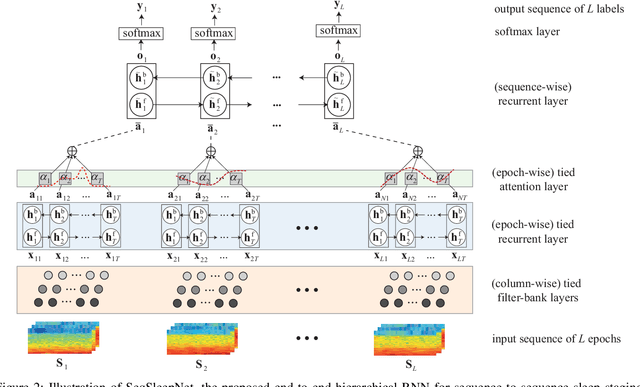
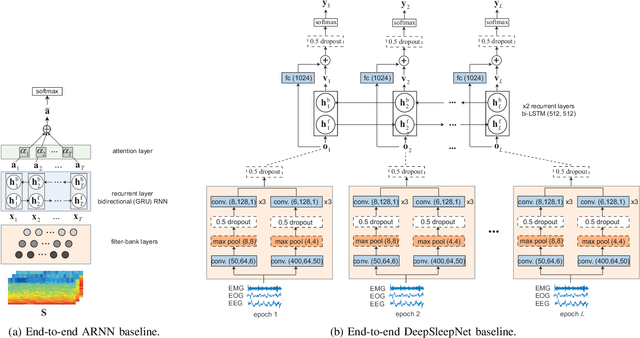

Abstract:Automatic sleep staging has been often treated as a simple classification problem that aims at determining the label of individual target polysomnography (PSG) epochs one at a time. In this work, we tackle the task as a sequence-to-sequence classification problem that receives a sequence of multiple epochs as input and classifies all of their labels at once. For this purpose, we propose a hierarchical recurrent neural network named SeqSleepNet. The network epoch processing level consists of a filterbank layer tailored to learn frequency-domain filters for preprocessing and an attention-based recurrent layer designed for short-term sequential modelling. At the sequence processing level, a recurrent layer placed on top of the learned epoch-wise features for long-term modelling of sequential epochs. The classification is then carried out on the output vectors at every time step of the top recurrent layer to produce the sequence of output labels. Despite being hierarchical, we present a strategy to train the network in an end-to-end fashion. We show that the proposed network outperforms state-of-the-art approaches, achieving an overall accuracy, macro F1-score, and Cohen's kappa of 87.1%, 83.3%, and 0.815 on a publicly available dataset with 200 subjects.
Joint Classification and Prediction CNN Framework for Automatic Sleep Stage Classification
Sep 04, 2018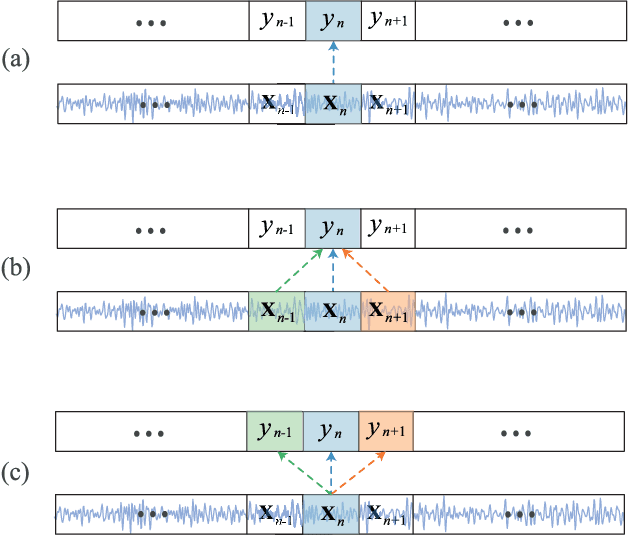

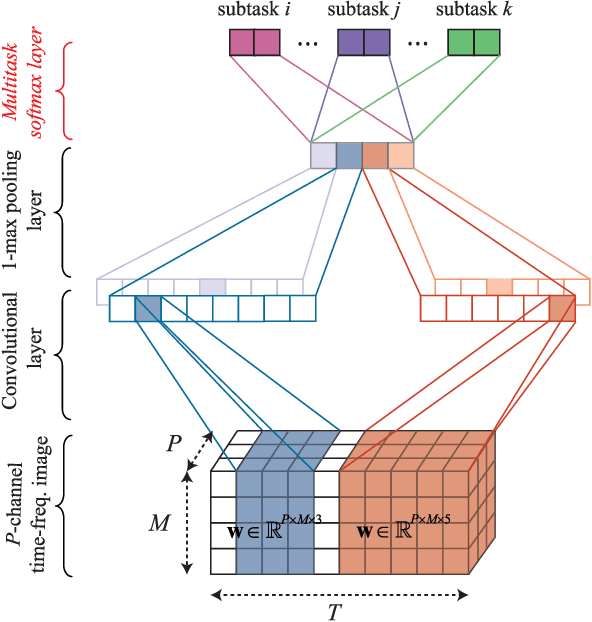

Abstract:Correctly identifying sleep stages is important in diagnosing and treating sleep disorders. This work proposes a joint classification-and-prediction framework based on CNNs for automatic sleep staging, and, subsequently, introduces a simple yet efficient CNN architecture to power the framework. Given a single input epoch, the novel framework jointly determines its label (classification) and its neighboring epochs' labels (prediction) in the contextual output. While the proposed framework is orthogonal to the widely adopted classification schemes, which take one or multiple epochs as contextual inputs and produce a single classification decision on the target epoch, we demonstrate its advantages in several ways. First, it leverages the dependency among consecutive sleep epochs while surpassing the problems experienced with the common classification schemes. Second, even with a single model, the framework has the capacity to produce multiple decisions, which are essential in obtaining a good performance as in ensemble-of-models methods, with very little induced computational overhead. Probabilistic aggregation techniques are then proposed to leverage the availability of multiple decisions. We conducted experiments on two public datasets: Sleep-EDF Expanded with 20 subjects, and Montreal Archive of Sleep Studies dataset with 200 subjects. The proposed framework yields an overall classification accuracy of 82.3% and 83.6%, respectively. We also show that the proposed framework not only is superior to the baselines based on the common classification schemes but also outperforms existing deep-learning approaches. To our knowledge, this is the first work going beyond the standard single-output classification to consider multitask neural networks for automatic sleep staging. This framework provides avenues for further studies of different neural-network architectures for automatic sleep staging.
 Add to Chrome
Add to Chrome Add to Firefox
Add to Firefox Add to Edge
Add to Edge